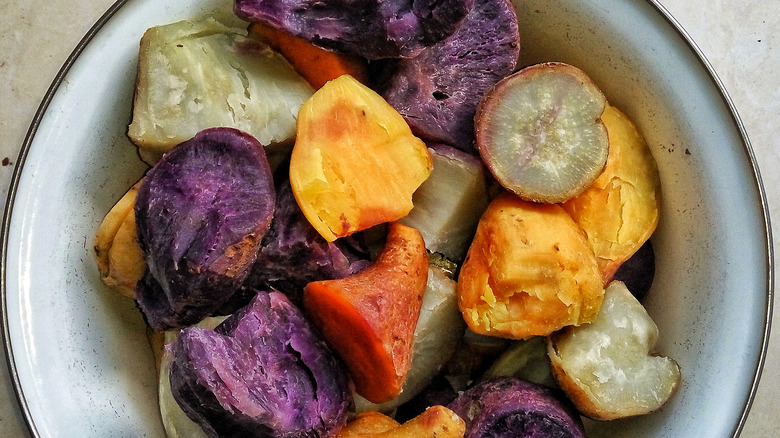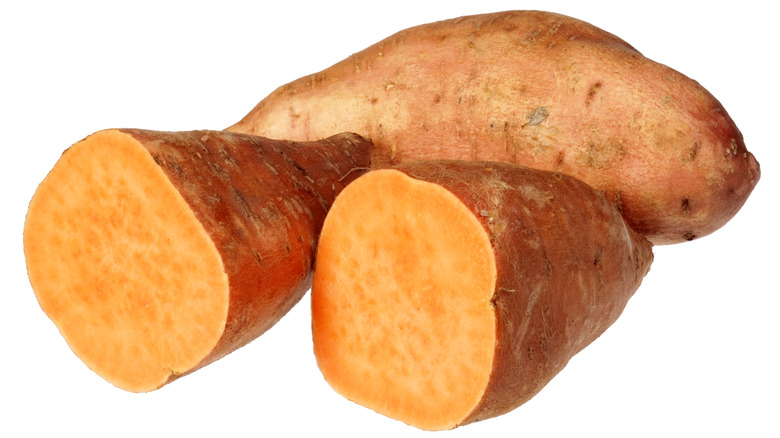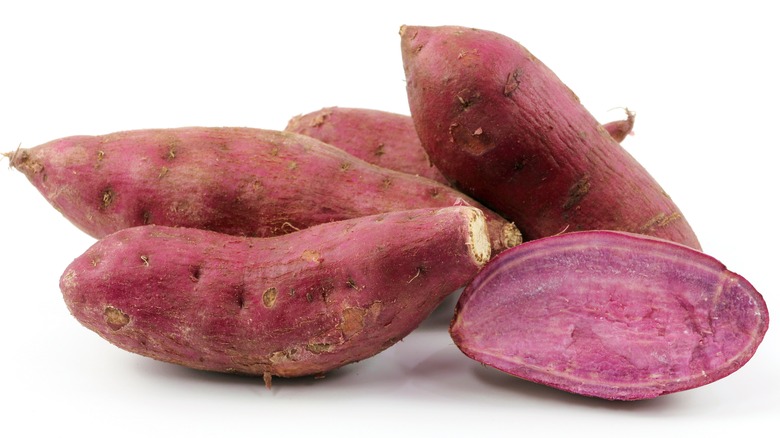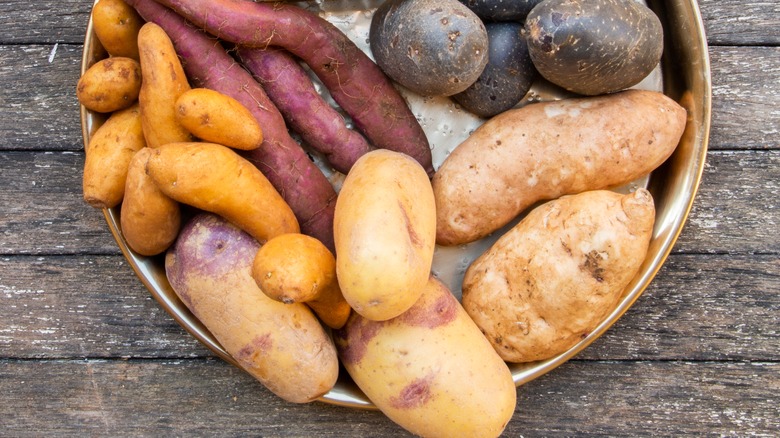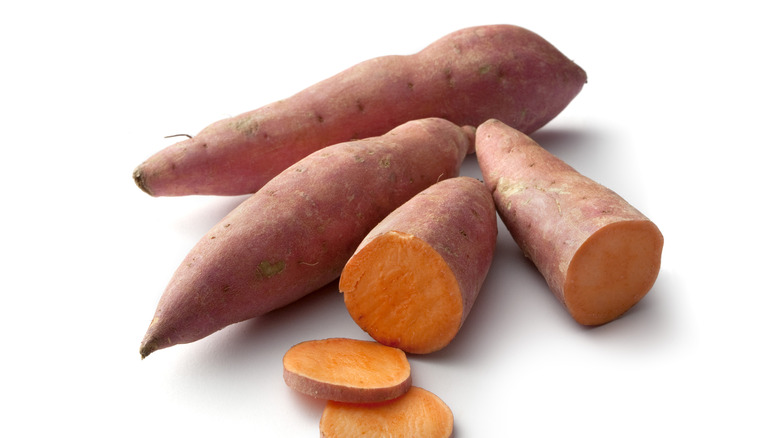Jewel Sweet Potatoes Vs Red Garnet: What's The Difference?
Sweet potatoes are deliciously versatile, with applications in both the savory and dessert spheres. Although they may be most strongly interlinked with the holidays, there are many flavorful techniques that showcase their flavor any time of year.
In large part, sweet potatoes are malleable due to their sheer variety — it's estimated over 400 types of tubers exist. Each type exhibits its own characteristics, which means the flavors and textures will translate into distinct dishes, and when perusing a selection at the grocery store, choosing the right one can feel intimidating.
So, let's dive into two especially popular varieties: the jewel and red garnet. They'll be easily differentiated visually, making it easy to grab the right bunch for a sweet potato pie. However, in flavor and texture, the two potatoes have their differences. Becoming well-versed in each sort showcases the depth sweet potatoes have to offer.
What are jewel sweet potatoes?
Along with the similarly-shaped Beauregard, the jewel is one of the most popular sweet potatoes in the U.S. — so it's likely you've already seen it. The shape is elongated and oval-like, with small pinched ends. Their exterior is of a light orange hue, with a characteristic darker orange interior typical for sweet potatoes. After preparation, the color will fade a bit.
Jewel sweet potatoes are noted for their moist internal texture, which retains a watery yet starchy consistency once cooked. As a result, they're often boiled, steamed, and mashed to best suit their mushier texture. However, they're fit for other applications, too, turning out delicious when baked, mashed in casseroles, or roasted as fries.
In flavor, jewel sweet potatoes are on the mild side, with a slight sweetness, as well as notes of nutty and earthy undertones. They're similar in palate to other sweet potatoes and may occasionally be called yams — although this is a misnomer.
What are red garnet sweet potatoes?
The brightly colored red garnet is one of the easiest varieties to recognize. It has red, orange, and slightly copper-tinged skin that may veer towards brown. This tuber is quite large — exemplars can grow up to a foot in size — and has an elongated shape typical for sweet potatoes. Inside, the flesh is a vivid orange to reddish in color, which lends preparations a pleasing bright hue. The tuber retains such a vivid color even after heating.
In texture, red garnet sweet potatoes are also damp, with a tasty starchiness that makes them excellent in baking applications. However, their flesh also holds up whenever they're prepared whole, rendering them as a tasty baked potato candidate. Plus, their appealing orange hue isn't diminished after heating, which makes them an excellent option for pies and other desserts.
Additionally, they pack in an especially sweet flavor with only subtle savory notes. As with jewel sweet potatoes, the garnet variety is often misnamed as a red yam, although they are decidedly a sweet potato.
Red garnet's flesh is a better fit for baking than jewel sweet potatoes
The two potato varieties offer similar qualities: A moist interior, a sweet flavor, and an attractive orange color. As a result, they can be utilized more or less interchangeably, especially as opposed to other sweet potato types. However, that's not to say there's not an optimal recipe for each one.
Take red garnet's sweet and starchy consistency — it's ideal for baking. Once cooked, the potato yields a moist result since the tuber easily retains water. Such a quality makes it the perfect candidate for sweet potato pie. Plus, the flavor boasts a complex sweetness — especially as opposed to Jewel potatoes — with notes recalling fruit and vanilla. As a result, the red garnet pops in dessert applications, including creative options like sweet potato bread, or pair with spices in Gulab Jamun, an intricately flavored syrup-soaked dish. Just note that as a standalone side to savory dishes, red garnet's palate may be overwhelming.
Jewel potatoes offer a milder flavor that's ideal in savory dishes
Alternatively, jewel potatoes lean to a more watery consistency. When prepared improperly, such a characteristic can lead to sogginess. However heated to the perfect texture, the flesh turns delightfully fluffy. So, the variety is well-suited to versatile applications like creating mashed potatoes, making gnocchi, or even going into aligot, a sweet potato fondue. The tuber does well in the oven, too — it'll roast delectably. Plus, especially if supplemented with a bit of sugar, a jewel will yield a tasty pie.
The jewel has a more savory flavor, which will align with spicy and salty components better than a red garnet. Overall, this tuber is a more malleable choice, its qualities meshing into straightforward sweet potato applications. It can be replaced in recipes calling for the Beauregard — the most popular type — meaning a jewel will fit it in most sweet potato recipes.
Don't stress if the right variety isn't on hand. Either way, there's no going wrong; both sorts produce a delicious batch of sweet potatoes.
